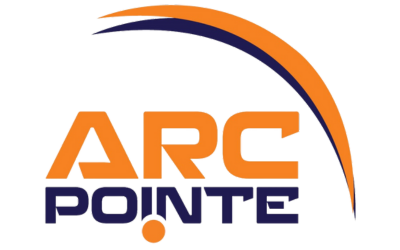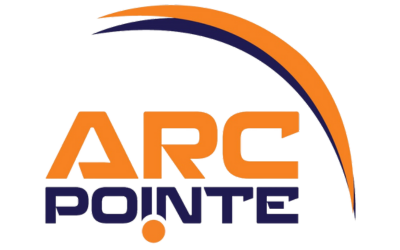
Choosing the Right Virtual Assistant
A virtual assistant is a remote professional who tackles time-consuming tasks—freeing your team to focus on strategy, customers, and revenue. Today’s VAs range from admin generalists to domain specialists who handle scheduling, inbox and calendar management, reporting, data entry, content and social media, and even research and AI-assisted analysis. With remote work mainstream, integrating a VA into operations is often the most cost-effective way to expand capacity without adding office space or equipment.
The best programs are tailored: a VA (or VA team) maps to your goals and workflows—marketing support this quarter, sales ops the next—so you get measurable productivity gains, lower operational costs, and a calmer, more focused workload for in-house staff.
Benefits of Hiring a Virtual Assistant
1) Time back for high-value work. Offload recurring tasks (email triage, meeting coordination, follow-ups, reporting) so leaders and ICs can protect deep-work blocks.
2) Cost efficiency. You pay only for scoped hours or deliverables—no office overhead or full-time benefits. Experienced VAs may cost more hourly but often deliver higher quality and less rework.
3) Access to specialized skills. From graphic design and content ops to CRM clean-up, light automations, and basic AI usage, you can plug skill gaps without new headcount.
4) Productivity and predictability. A consistent VA cadence—daily inbox cleanse, weekly reports, monthly campaigns—keeps teams on track and reduces bottlenecks.
5) Built-in flexibility. Scale up during launches or peak season; scale down when the sprint ends. Agencies can also provide backup coverage and QA.
Types of Virtual Assistants (and When to Use Each)
Administrative Virtual Assistant (generalist). Inbox and calendar management, travel, expense reconciliation, file organization, vendor coordination. Use when leadership and teams need consistent coordination.
Marketing Virtual Assistant. Social scheduling, content formatting, basic design, SEO uploads, email campaign support. Use when you have a content plan but limited execution bandwidth.
Sales/Operations Virtual Assistant. CRM hygiene, compliant list building, meeting scheduling, pipeline housekeeping, quote/proposal packaging. Use when reps and AMs are stuck in non-selling tasks.
Virtual Executive Assistant. High-level gatekeeping, partner coordination, deck prep, prioritization guardrails, confidential support. Use when founders/executives need leverage and trust.
Specialist/Technical Virtual Assistant. Web updates, analytics dashboards, bookkeeping/AP, customer support, AI-assisted research, workflow automations. Use when recurring technical tasks benefit from SOPs.
How to Hire a Virtual Assistant (Step by Step)
1) Define outcomes, not just tasks. Write a one-page scope: objectives, success metrics, tools, data access, hours/coverage, and “done looks like” examples.
2) Choose the right model.
• Freelance VA: budget-friendly, flexible hours; requires tighter management.
• Dedicated VA (contracted): reliable coverage; easier to embed in team rhythms.
• Agency: fast matching, backup coverage, QA, account manager—often at a higher rate.
3) Evaluate skills and experience. Ask for a work sample aligned to your tasks (e.g., inbox triage rules, a one-page SOP, or a sample report). For specialists, verify tool proficiency (Google Workspace/Microsoft 365, CRM, Canva, spreadsheet formulas, AI usage policy).
4) Check security posture. Require device encryption, MFA, a password manager, and least-privilege access. Document what data is accessible, where it lives, and how it’s shared (no personal email, no local storage of sensitive files).
5) Run a paid pilot (2–4 weeks). Start with a clear sprint: 10–20 hours, weekly goals, and a mid-point review. Keep a living SOP that the VA updates as they learn your preferences.
6) Formalize communication and SLAs. Daily check-ins (async summaries), weekly priorities, response windows (e.g., 2 business hours), escalation path, and coverage for holidays/vacations.
Virtual Assistant Services (What to Put in Your Scope)
Admin & Ops: inbox rules, calendar blocks, travel, expense/receipt workflows, meeting notes, filing/permissions.
Marketing: social scheduling, content formatting/repurposing, newsletters, UTM hygiene, asset libraries.
Sales & CX: CRM updates, quote packaging, scheduling, ticket triage, NPS/CSAT follow-ups, knowledge base upkeep.
Reporting: weekly dashboards, KPI snapshots, data cleanup, list maintenance.
Documentation: SOP creation, template maintenance, vendor lists, how-to guides.
Tip: Bundle tasks into recurring packages (daily/weekly/monthly) so quality compounds and context switching drops.
Advanced Virtual Assistant Capabilities (AI, Automation, and Research)
Modern VAs often leverage AI (responsibly) to accelerate drafting, tagging, clustering, and first-pass research—always with human review and your brand/style guide. With light automation (rules in Gmail/Outlook, calendar workflows, spreadsheet scripts, Zapier/Power Automate), a VA can remove dozens of clicks from routine processes.
Governance matters: document acceptable AI use, source citation rules, and privacy constraints. Keep humans accountable for final outputs that affect customers, compliance, or finance.
Managing a Virtual Assistant for Long-Term Success
Set the ground game. Shared dashboard or weekly doc: goals, blockers, deadlines. “Definition of done” per task type. Response-time and availability windows.
Coach with artifacts. Record quick Looms, share checklists, and keep SOPs updated. Ask the VA to propose improvements every month.
Measure what matters. Track SLA adherence (response/turnaround), error rate, on-time completion, stakeholder satisfaction, and impact (hours saved, campaign throughput, sales support wins).
Address issues early. If deadlines slip, review capacity and clarify priorities; if quality dips, add checklists, examples, and a QA pass until performance stabilizes.
Security and Data Protection (Non-negotiables)
Access: SSO/MFA, role-based permissions, revoke on offboarding.
Devices: encryption, screen lock, patch currency, no shared accounts.
Data handling: store in company systems (Drive/SharePoint/CRM), not local; redact PII where possible; use secure file sharing.
Confidentiality: NDAs and vendor agreements that reflect your jurisdiction and risk profile.
Common Mistakes to Avoid
Hiring for “cheap hours” instead of defined outcomes; vague scopes without examples or SOPs; over-indexing on tools and under-indexing on communication and QA; granting broad access on day one (start least-privilege, expand as trust builds); expecting strategic ownership from a role scoped as tactical execution.
Conclusion
Choosing the right virtual assistant is about clarity and fit: define outcomes, match the model to your needs, verify skills and security, pilot with crisp metrics, and coach with living SOPs. Done well, a VA becomes a compounding advantage—keeping your team focused, your operations predictable, and your growth on schedule.
FAQ
1) How much does a virtual assistant cost? Rates vary by skill and region. Generalists may charge less; specialists in design, analytics, or automations charge more but often deliver higher leverage per hour.
2) Should I hire freelance, dedicated, or an agency VA? Freelance offers flexibility, dedicated provides consistency, and agencies add speed, QA, and backup. Choose based on budget, coverage needs, and how much management you can supply.
3) What tasks should I delegate first? Start with repeatable tasks that drain focus: inbox and calendar rules, weekly reporting snapshots, social scheduling, CRM hygiene, and customer follow-ups.
4) How do I keep quality high? Provide examples, checklists, and a “definition of done.” Hold a weekly 20-minute review to tune SOPs and remove blockers.
5) What about data security? Use SSO/MFA, role-based permissions, company storage only, and NDAs. Avoid local storage and personal email for work files.






